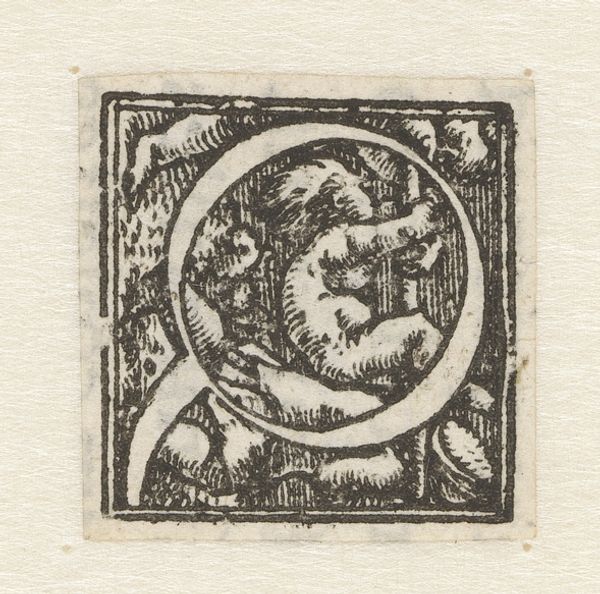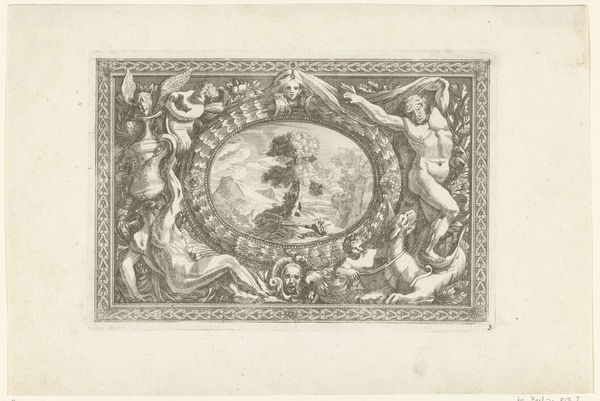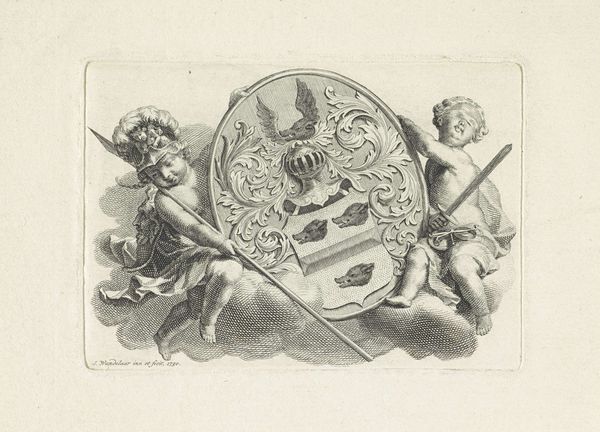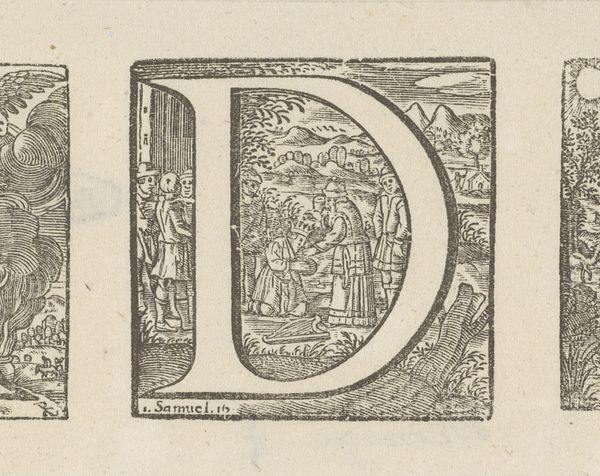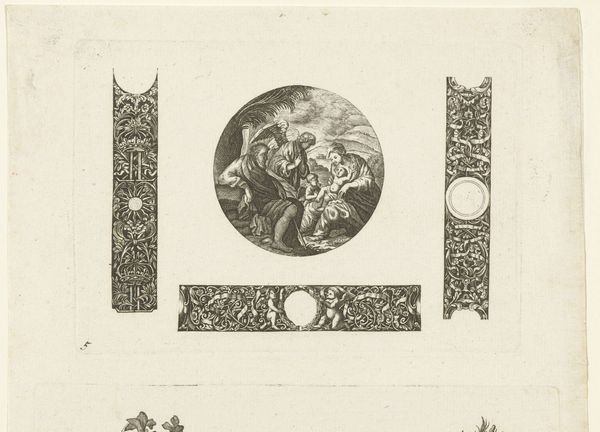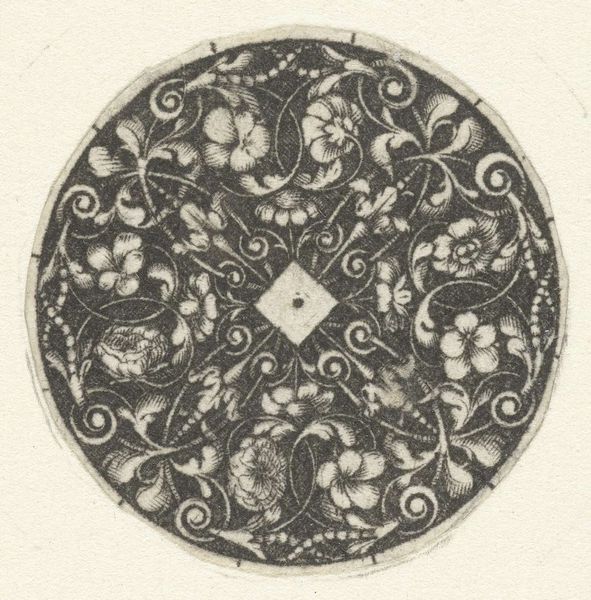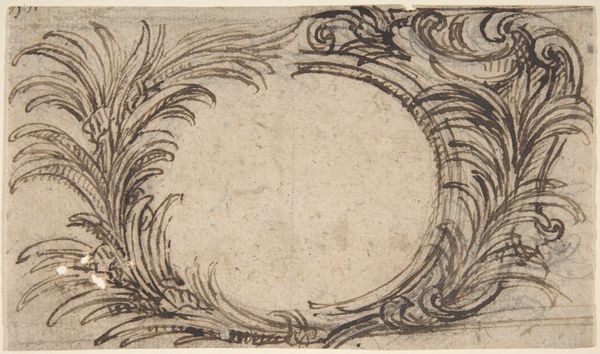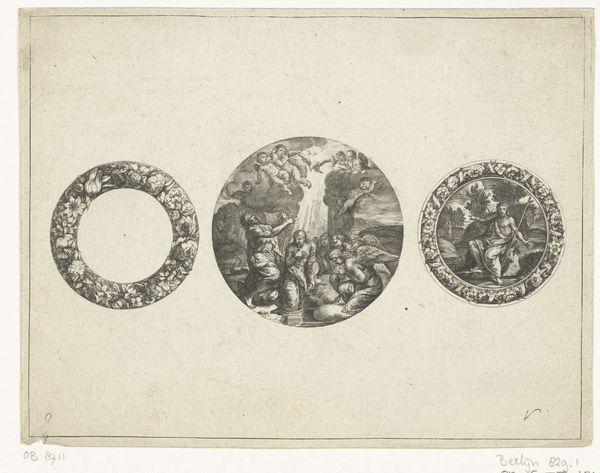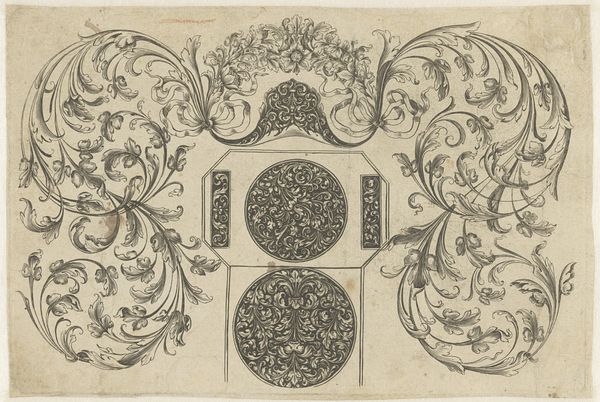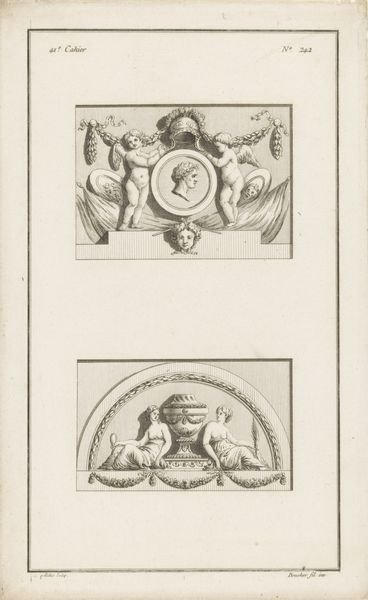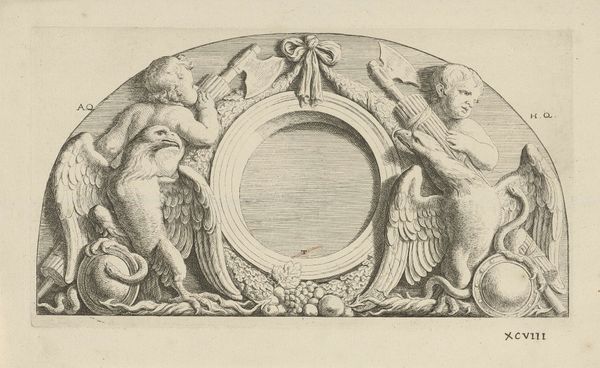
print, engraving
#
baroque
# print
#
old engraving style
#
figuration
#
history-painting
#
engraving
Dimensions: height 81 mm, width 17 mm
Copyright: Rijks Museum: Open Domain
Curator: Welcome. Here we have a rather charming engraving entitled "Strook met vier putti," or "Strip with four putti," dating back to before 1676. The artist, regrettably, is unknown. Editor: My first thought is how playful it feels, despite the medium. The delicate lines forming these chubby cherubs create such a sense of lightness and movement. It’s like witnessing a fleeting moment of Baroque exuberance. Curator: Indeed, the Baroque aesthetic is certainly at play here. Observe the elaborate ornamentation, the swirling floral arrangements, and, of course, the titular putti themselves, arranged symmetrically, almost as if posing. The engraving exemplifies the period’s penchant for dynamic composition and intricate detail. Editor: Considering its creation in or before 1676, these putti could be seen as more than mere decorative elements. They appear as a cultural commentary on childhood, innocence, even mortality, filtered through a patriarchal lens—their cherubic faces hinting at vulnerability even as they hold the symbolic weight of the heavens. Curator: Perhaps, but I find the engraving's impact stems more directly from its graphic qualities. The sharp contrast between the white paper and the densely hatched lines defines forms with incredible clarity. Notice how the unknown engraver uses subtle gradations in tone to suggest volume and depth, almost achieving a sculptural effect. Editor: I do see the nuances within those very calculated formal techniques. Considering how prints such as this would often circulate among different artisans to transfer iconographic images, do you think these choices normalize—through style and symbolic cues—certain ideals of masculinity, religious devotion, and, naturally, power during that period? Curator: It's certainly plausible that it functioned that way. The engraving’s beauty draws us in; whether as cultural mirror or reflection, we are offered something uniquely moving to consider. Editor: And while its formal composition remains captivating, understanding its wider social echoes enriches our perspective—a testament to the ever-evolving dialogues we have with art across the ages.
Comments
No comments
Be the first to comment and join the conversation on the ultimate creative platform.

